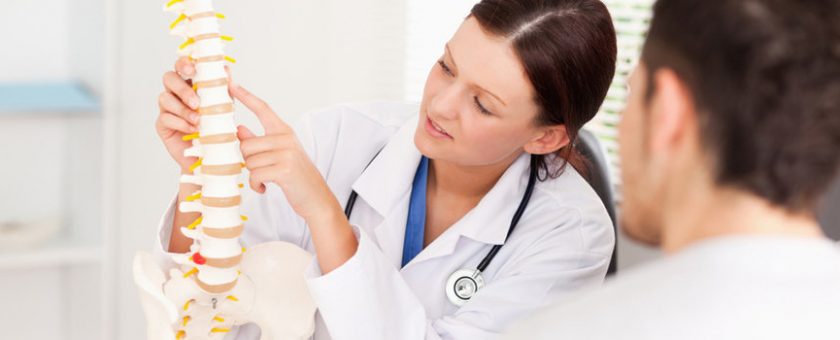Ultimately these compensation areas may break down at these abnormal spinal stress points and cause secondary, even tertiary problems to develop. There is a gravity produced domino effect to balance the spine. These areas often are more symptomatic than the area of the primary subluxation and are the typical areas of chronic pain, muscle tension and. The body is trying hard to stabilize the misaligned spine.
 Patients with this compensatory condition so often are treated for temporary relief by drugs or massage. By correcting the primary subluxation that caused them to be present in the first place the spasms are typically relieved or eliminated in a short time, often immediately. We know that this is so by feeling the spasms in the area we are about to adjust and right after the adjustment the spasms are gone. We believe that the tight muscles are not the problem, rather they are the result of misaligned areas of the spine and muscles are forced to work hard to compensate.
Patients with this compensatory condition so often are treated for temporary relief by drugs or massage. By correcting the primary subluxation that caused them to be present in the first place the spasms are typically relieved or eliminated in a short time, often immediately. We know that this is so by feeling the spasms in the area we are about to adjust and right after the adjustment the spasms are gone. We believe that the tight muscles are not the problem, rather they are the result of misaligned areas of the spine and muscles are forced to work hard to compensate.
There is one other common muscle factor found with spinal subluxations. That is a weakening or partial paralysis of muscles due to loss of normal nerve supply. Think of a dimmer switch on a light turned down. The current is reduced and the light dims. A vertebral subluxation can do the same if the motor (muscle) nerves are affected. In this case the normal, stronger muscle opposite the weakened one will pull the bone of an extremity joint or a vertebra towards it. Then the strong muscle gets shorter and tighter as it pulls the area further out of balance and the patient feels this. They will not feel the nerve interference to the muscle caused by the subluxation as the nerve’s impulse is coming out from the brain to the muscle. It is the sensory nerves from the body sending messages to the brain that gives us many different kinds of feelings.
 We provide specific extremity adjustments where needed. They are also based on the Gonstead Method of care. They are any joint in the body other than the spine, except for the jaw and cranial joints. Extra-spinal is now the term the insurance companies use and it means that the jaw joints and all the cranial bone joints are included along with all those of the upper and lower limbs. These areas are often injured by many types of strains, sprains, falls and vehicle collisions, just as is so with the spine.
We provide specific extremity adjustments where needed. They are also based on the Gonstead Method of care. They are any joint in the body other than the spine, except for the jaw and cranial joints. Extra-spinal is now the term the insurance companies use and it means that the jaw joints and all the cranial bone joints are included along with all those of the upper and lower limbs. These areas are often injured by many types of strains, sprains, falls and vehicle collisions, just as is so with the spine.
The results of these adjustments are usually very good. We realign the bones of the joint and/or restore the motor nerve supply to the muscles that move, balance and stabilize the bones of the affected joint. Many of these problems correct very quickly, and with dramatic results, but of course some don’t. This is the same as with the spinal joints, but the spine is much more complicated than these other joints. Every patient is different.
The variables are: age, degree of the injury, age of the injury, the patient’s nutritional state, body chemistry state, dietary habits, use of tobacco, alcohol, drugs, sometimes genetics, degree of fitness, levels of mental and physical stress, amount of physical work or sports load on the joint, body weight and amount of degeneration present in the joint. However, the presence of arthritis with or without bone spurs or degeneration does not necessarily mean that progress won’t be made. Where there is life there is hope!

